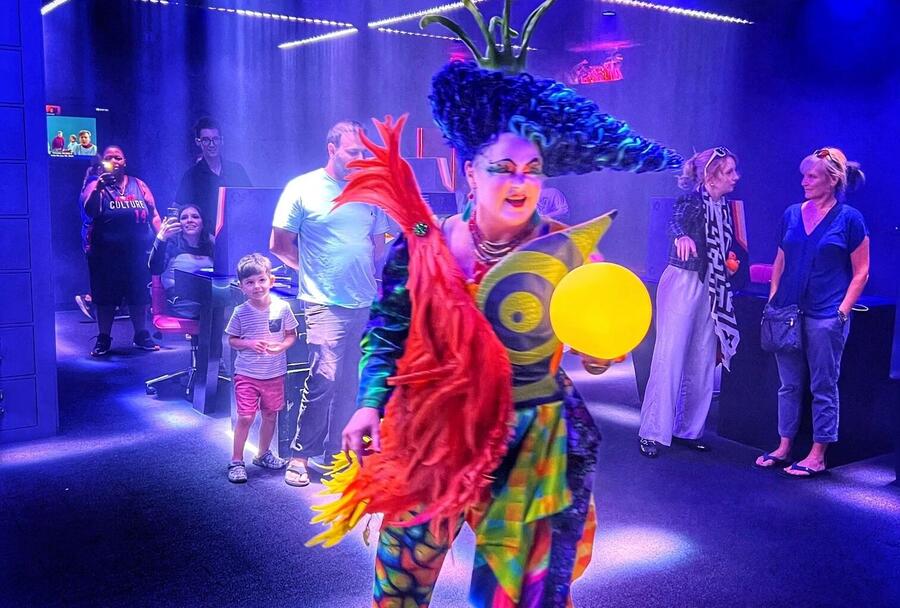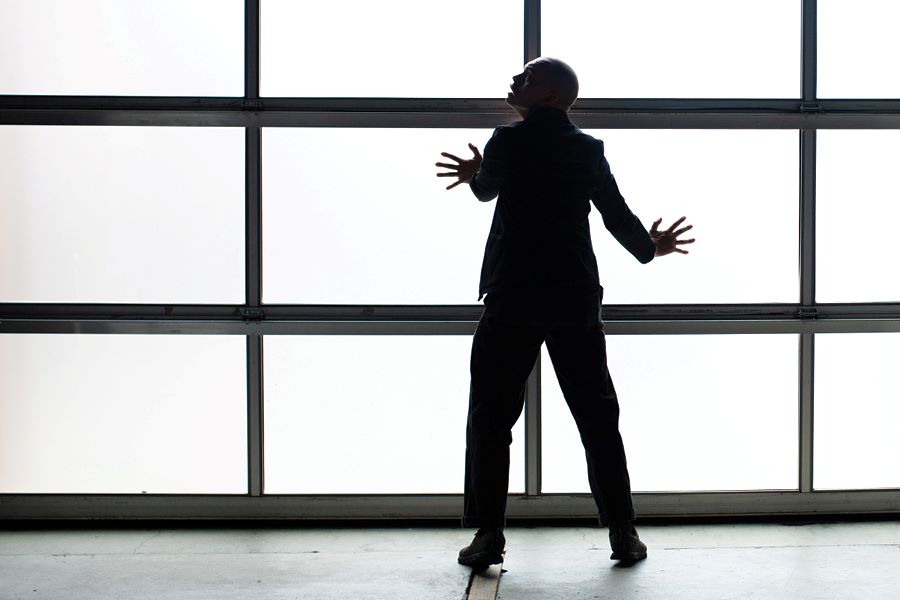Creators in theatre: If you currently hold fear or anxiety that your particular art form is dwindling or dying, now is the time to fully abandon that notion. That very fear may be self-fulfilling, resulting in a desperate clinging to the traditional structures and environments of our crafts. In doing so, we limit ourselves to “safe spaces,” which often come with a smaller circle of donors and patrons, attracted to the nostalgic aspect of what we are doing, the familiarity of the concert hall and the tulle of a Balanchine skirt. But theatre is not immune to the ever-shifting sands of the zeitgeist, and fear of loss and a desire to preserve something “untarnished” is so often the very thing that results in its erosion.
In this need to adapt, the potential for theatre is vast. We must find those opportunities to transmute our artforms into results potentially unrecognizable even to ourselves. In doing so, we will also reach broader audiences. This in turn inspires fresh voices to imagine themselves as part of its future. These aspects won’t merely protect or “preserve” theatre—they will truly evolve it.
Being an emerging creator in theatre is hard, and opportunities can seem sparse. I learned this firsthand, if from an unlikely angle: My formal schooling focused on painting and sculpture, yet my first professional decade out of school was as a performer for Cirque du Soleil’s Mystère. The barrier to drawing and painting can be incredibly low: Just pick up a paper and pencil and you’ve got a good start, while finding opportunities to not only participate in but to create theatrical work is immensely more difficult.
So I was lucky: In the 2010s, Cirque offered a small annual platform for emerging choreographers to test works onstage, and I had the chance to experiment as a creator for several years, creating short pieces that combined circus and ballet art forms. Though it only happened once a year, that opportunity landed me among a fortunate group of artists who enjoyed the backing of a prominent company to create a substantial work for the stage. Assembling a team, securing a venue, coordinating lighting and audio—these all require time and resources, and as such are barriers so daunting that many who’d be willing to put in the effort don’t even believe it to be possible. Sadly, Cirque’s platform for emerging choreographers was one of the first items on the chopping block after the pandemic, as they emerged from bankruptcy and tightened their belts.
We sort of trick people, in a way, into experiencing installation art without having to go experience installation art.
Fast forward some years to my current role as the exhibition creative director for Meow Wolf’s Omega Mart in Las Vegas. Meow Wolf is a wildly inclusive and artistically expressive company, using immersive installations to literally construct alternate realities that blur the line between fact and fiction. Meow Wolf welcomes the misfit, the outsider, both among its artists and in its invitation to the public to explore our exhibits. We sort of trick people, in a way, into experiencing installation art without having to go experience installation art. The heady, conceptual environment of a museum space—a deterrent to many—doesn’t exist within a Meow Wolf exhibit. Audiences instead enter an expansive, playful headspace, where they’re thus more willing to engage with experimental work.
As a profitable business with a steady income stream, Meow Wolf is an ideal place to test theatre’s boundaries, a space that can offer low-risk yet impactful platforms to emerging theatrical creators, while bringing those works to a wide audience primed for the occasion. Last fall, for instance, Omega Mart presented a pop-up opera performance inside the exhibition. Created by the remarkable Vegas City Opera, the show was a deft dicing and rearranging of excerpts from Carlo Gozzi’s bizarre surrealist work The Love for Three Oranges. As I watched its premiere on opening night, I saw a similar magic happen with the opera as it does with us for installation art—i.e., we sort of tricked the audience into watching opera without having to go watch opera. I saw kids who would surely have been snoozing in a concert hall dart rapidly through the space to keep up with the performers, while adults stood captivated by the ethereal voices of the characters singing mere feet from them.
I’m not suggesting that Meow Wolf is radically reinventing theatre; immersive has been around for a long time in various forms. But in reflecting on The Love for Three Oranges in Omega Mart, I marveled at how easily we could proffer a space within which an opera could invite audiences to leap into an unknown multiverse with them.
If theatre is only experienced in its most traditional forms, it risks limiting the creative potential of those who don’t see their stories reflected—or who don’t see themselves as part of the performance world at all.
Meow Wolf’s founding artists are no strangers to performance, constantly incorporating it from their earliest days working together, as in the legendary Monster Battle in Santa Fe. Originally shunned by the traditional gallery scene, these outsider artists forged a platform to fully express themselves (with a lot of hard work and some help from angel investors), and thus the world discovered an irresistible blend of aesthetic and experience. Once unappreciated by the wider public, Meow Wolf’s work is now enjoyed by nearly 2 million visitors a year.
Meow Wolf is a case study in business providing inclusive platforms for creators to experiment. Lowering the barrier of entry and welcoming the “outsider” widens the creative pool immensely. More diverse perspectives allow for the transmutation of theatre across the entirety of the cultural landscape. We must welcome the “other” as a voice in places of radical experimentation. When we create spaces that are playful and welcoming, we not only expand who feels invited to experience art but also invite those same people to reimagine themselves as creators.
If theatre is only experienced in its most traditional forms, it risks limiting the creative potential of those who don’t see their stories reflected—or who don’t see themselves as part of the performance world at all. But when theatre reaches new people in unexpected ways and places, it helps inspire future generations of creators whose voices, perspectives, and innovations will in turn reshape the landscape further. I’m betting that this feedback loop will keep theatre vivacious, nimble, and surprising for years to come.
Kent Caldwell is the creative director and lead artist on Meow Wolf’s Omega Mart.
Support American Theatre: a just and thriving theatre ecology begins with information for all. Please join us in this mission by joining TCG, which entitles you to copies of our quarterly print magazine and helps support a long legacy of quality nonprofit arts journalism.





